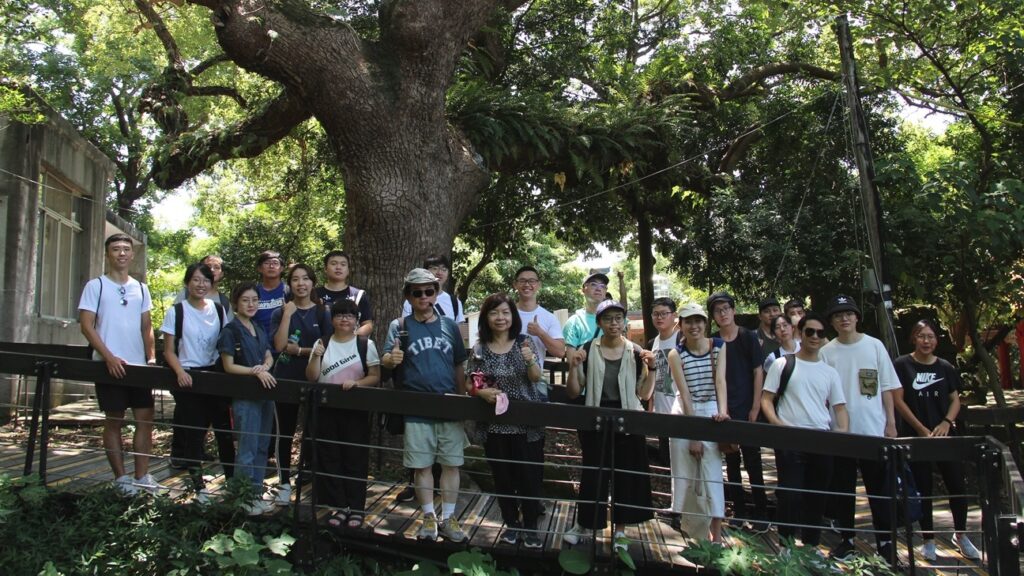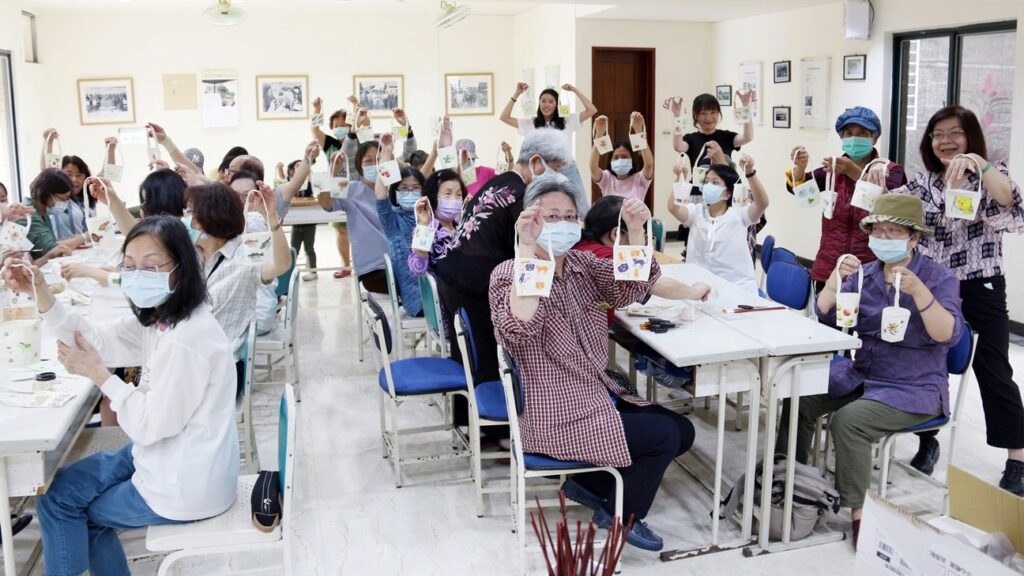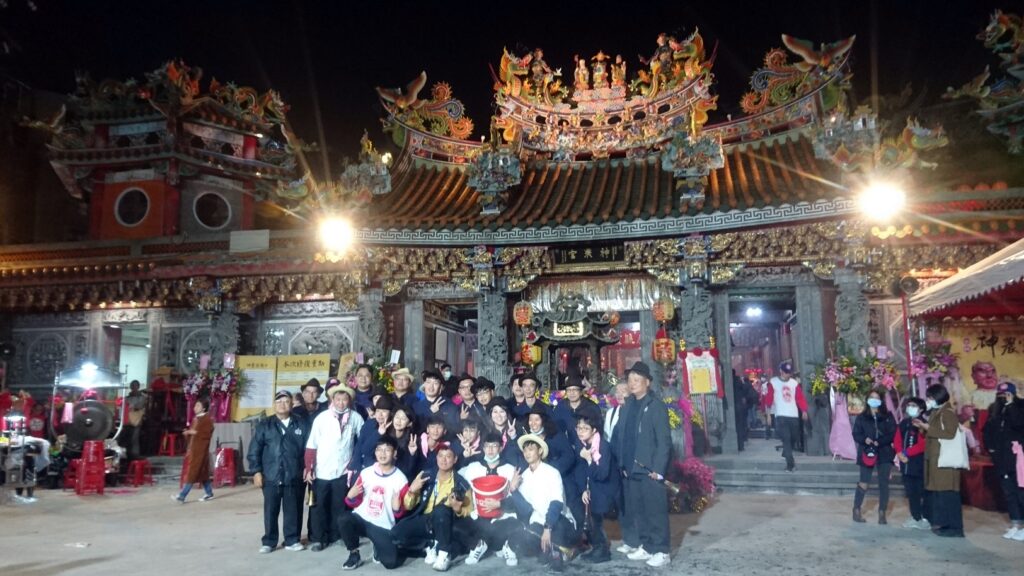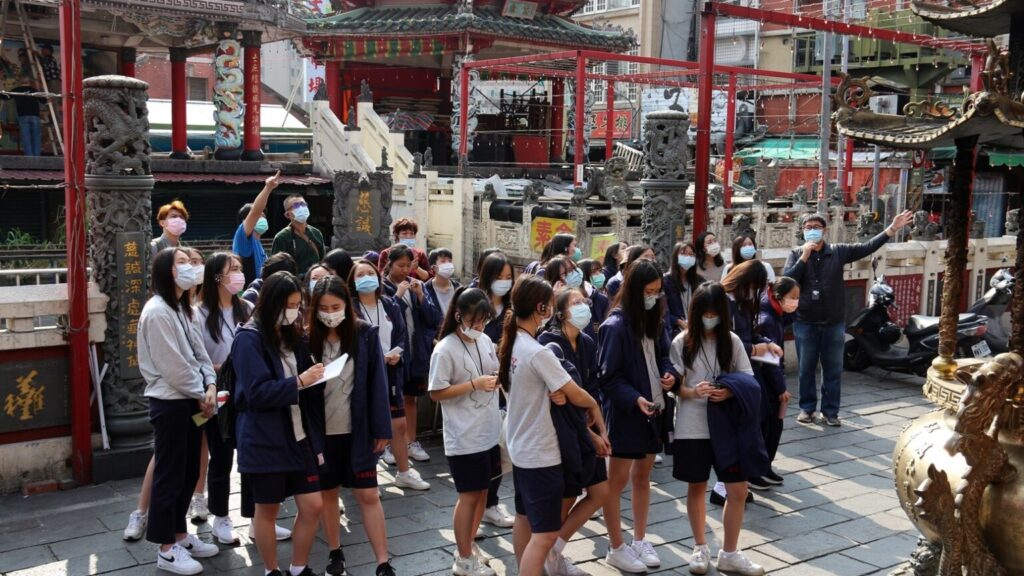計畫場域列表:

芝山岩地區:
芝山岩除了擁有史前文化的遺址,同時還是當年漳泉械鬥的重要據點,此外也是日治時期台灣小學教育的發源地。而山上的大墓公,則是每年當地各種宗教和民俗活動的重要場所。剛進入場域時,在許多宮廟長輩們當中,我們年輕成員顯得很突兀,被以為也只是觀光客。隨著我們每年都會去紀錄為期一個月的慶讚中元活動,以及帶領學生走讀活動,到現在他們已經記得我們是東吳的朋友,也很開心有年輕人願意來記錄與傳承。
Chih-Shan-Yen
Chih-Shan-Yen is a range that is possessed of a cultural heritage site. Not only is it the important location where the internecine strife between Zhangzhou and Quanzhou ethnicities happened, but is also the cradle of Taiwanese education during the Japanese colonial era. “The Great Tomb” on top of Chih-Shan-Yen is where local religious and folk-custom activities take place each year. When we first entered the field area, many elderlies from the temple found it weird that we, the younger generations, would join religious activities. Well, year by year, as we participated in the Zhongyuan Pudu event, and brought students on walking tours, they started to remember that we are the team from SCU. They are glad that younger people are willing to write down and pass on the tradition.

雨農山莊:
雨農山莊原先是情報局的兩個眷村,雨後新村和忠勇新村改建而成。其名乃取自「戴雨農」,他是蔣介石最為倚重的情報負責人。剛進入場域時,由於他們從未舉辦過類似的活動,管委會溫主委不時提醒我們,這邊社區的人很冷漠,擔心沒人參加。因此三年前我們的第一場活動「園藝動手做」,主委很賣力地幫我們拉人來參加,葉淑玲老師唱作俱佳,引發共鳴。之後許多活動便很快地就額滿。去年中秋節的眷村美食分享與品嘗,更是出現了200名住戶。
Yu-Nong Village
The Yu-Nong Village was once a village of the Intelligence Agency. It was named after “Dai Yu-nong”, the Director of the Intelligence that Chiang Kai-shek entrusted the most. Before entering the field area, villagers were not used to joining activities, the chairman of the management committee, Mr. Wen, often point out that villagers here are impassive, and was worried that they wouldn’t participate. However, we held our first activity, “Plant Plot DIY”, three years ago. Mr. Wen worked very hard convincing villagers to join, and by holding more and more, villagers started to see our kindness; thereafter, activities were fully booked in a wink. Last Mid-Autumn Festival, there were more than 200 people who attended our “Military Village Food Sharing Party”.

士林舊街區:
士林舊街指的是現在士林捷運站附近這一區域,舊街是相對於新街的稱呼,過去在漳泉械鬥舊街被破壞後,隨著時間也慢慢地逐漸復甦,當地的神農宮、有應公媽廟、還有郭元益等店家,都對在地有著重要的影響。團隊成員除了拜訪當地宮廟人士、民俗文化職人,做口述歷史,把許多重要的在地特色歷史記錄下來之外,也跟神農宮合作,在廟旁的茶藝室舉辦多場來神農宮聽故事,邀請許多當地耆老,及民俗專家來演講,讓學術進入當地生活。
Jiou-Jie
Shilin Jiou-Jie is the area nearby MRT Shilin Station. In the past, after the destruction of the internecine strife, time went by and the land recovered, local organizations like Shennong Temple, You-Ying-Gong-Ma Temple, and Kuo-Yuan-Ye Bakery, all had great impact on the Jiou-Jie area. The USR project team visited local people from the temple and custom craftsmen to record oral history, and put a lot of unique history into writings. We also collaborated with Shennong Temple, and invited local seniors and folklore experts to give speeches about the history of Shilin.

士林新街區:
過去因為漳泉械鬥,士林的舊街區被破壞,當時在士林潘家的號招下,建設士林新街。新街指的是現在士林夜市那附近區域,以士林慈諴宮和潘家古厝為中心,周圍以大東西南北、小東西南北,八條路所建立的新聚落,並有水運及陸運,從清朝開始就是士林當地重要的集貨中心。團隊常舉辦以士林公有市場、慈諴宮、和在地特色店家等為景點的走讀路線,帶領學生們認識除了夜市還有許多有故事的地方。
Shin-Jie
After the destruction of the internecine strife, the Pan family gathered people to help reconstruct the Shin-Jie area, which is the neighbor nearby Shilin night market nowadays. The reconstruction is centered on Cixian Temple and the Pan family historical residence, surrounded by Da-Dong, Xi, Nan, Bei road, and Xiao- Dong, Xi, Nan, Bei road, the eight major pathways. It became a major market center with the Qing Dynasty. The USR project team often held walking tours that are themed with Shilin Public Market, Cixian Temple, and local featured stores, letting students realize that Shilin has more than just a night market.



